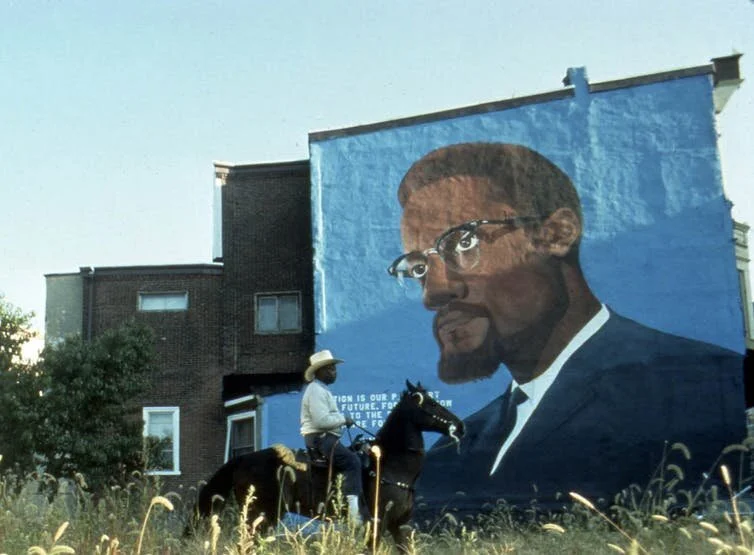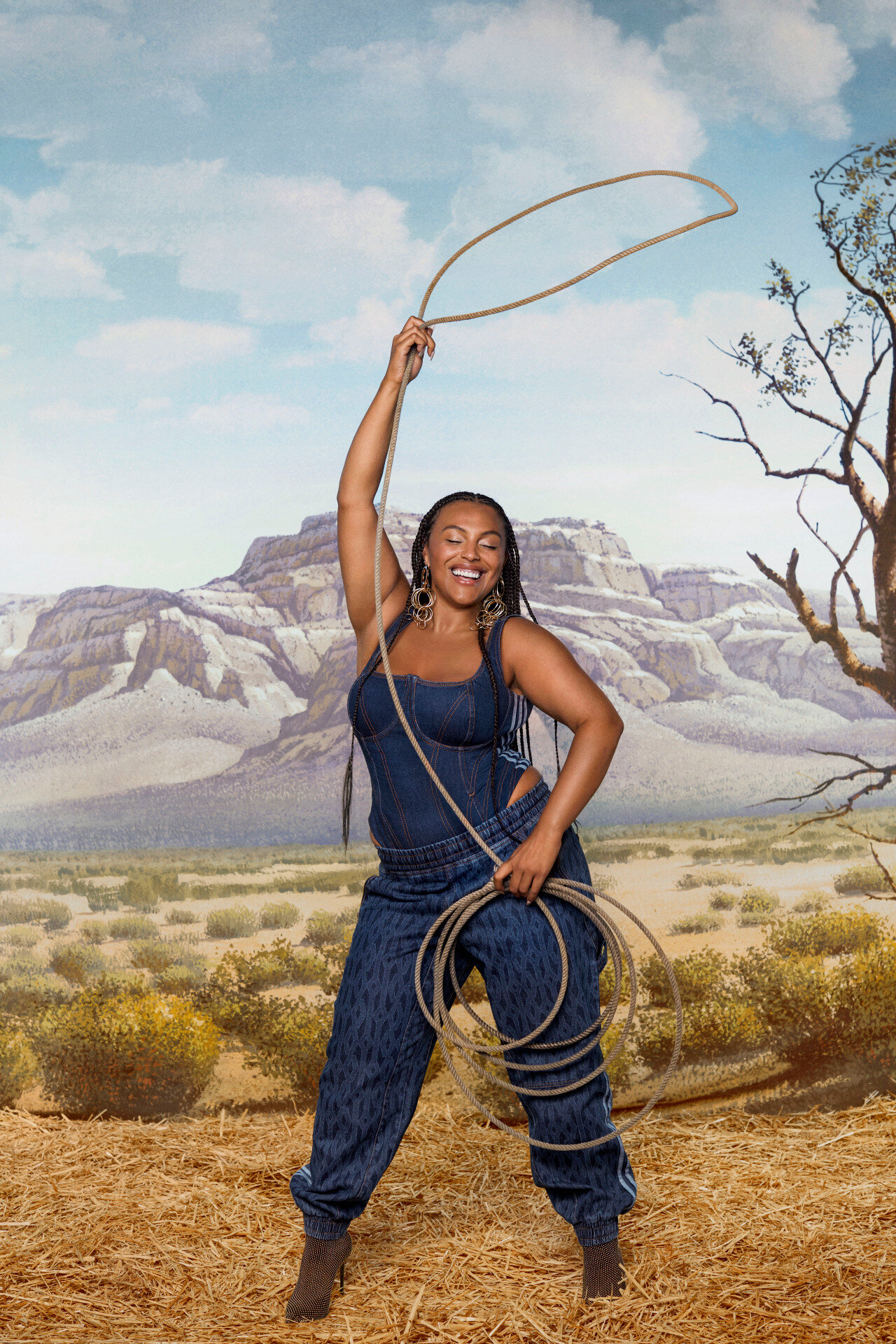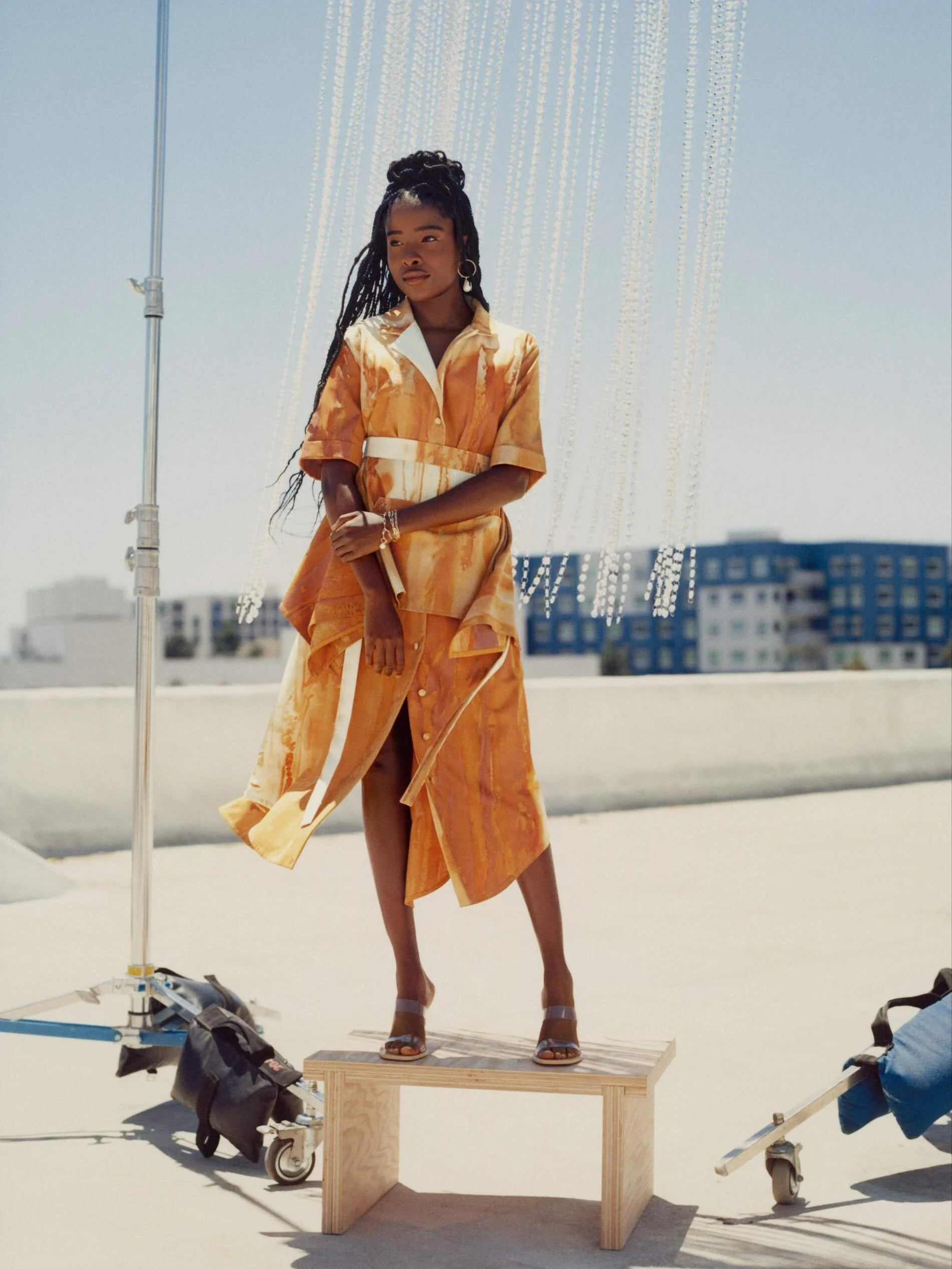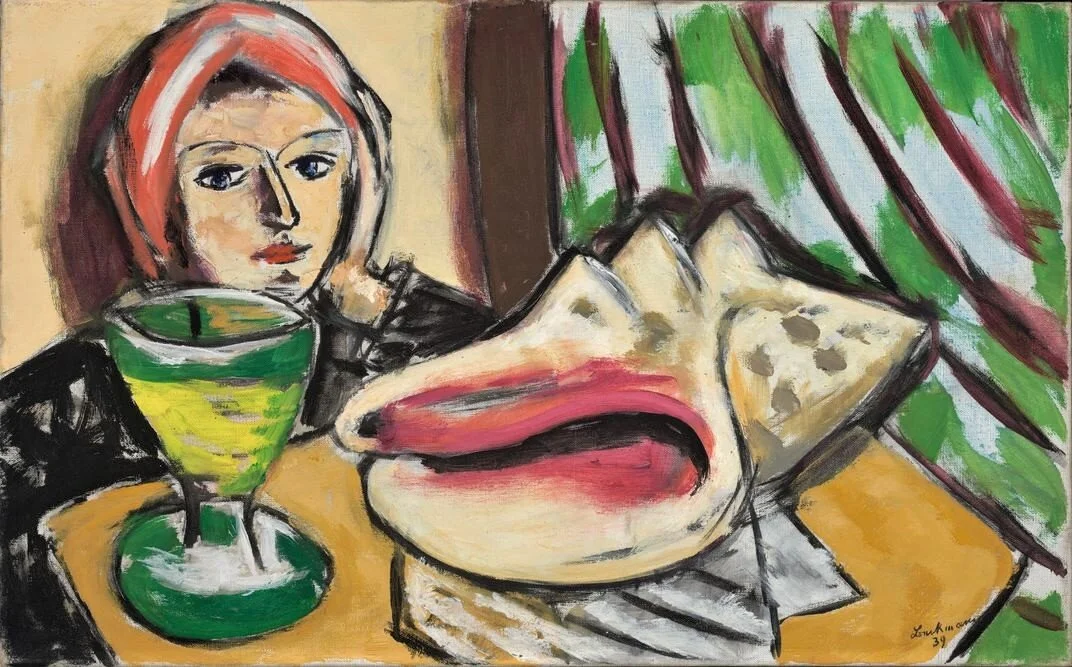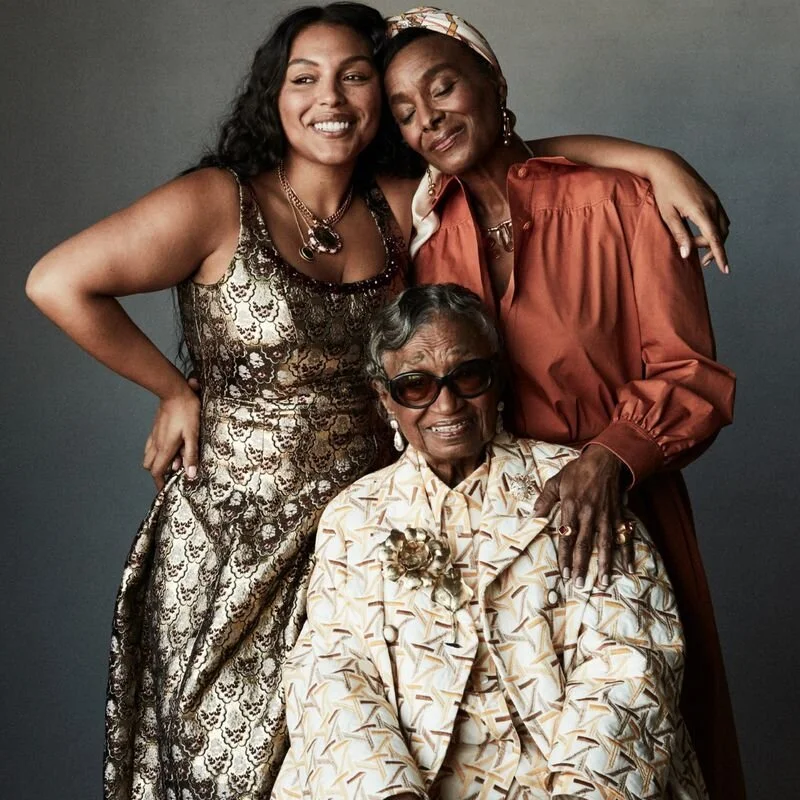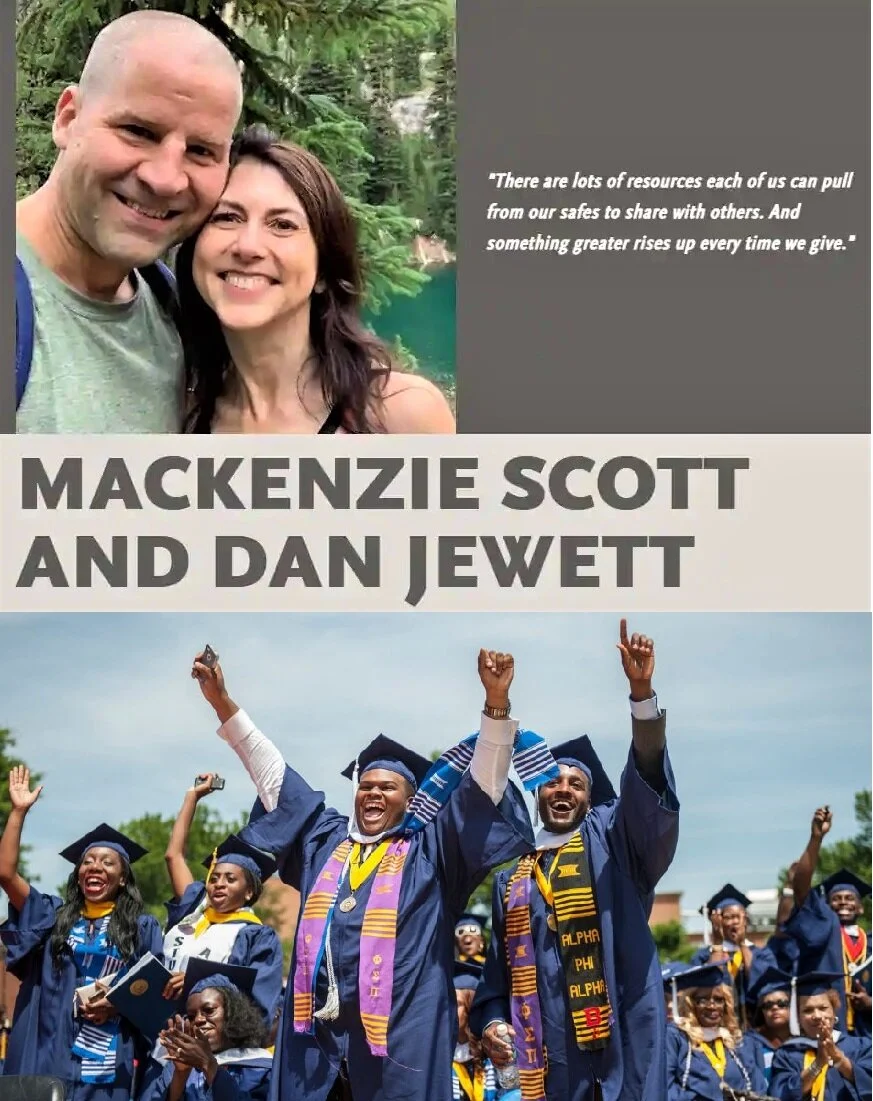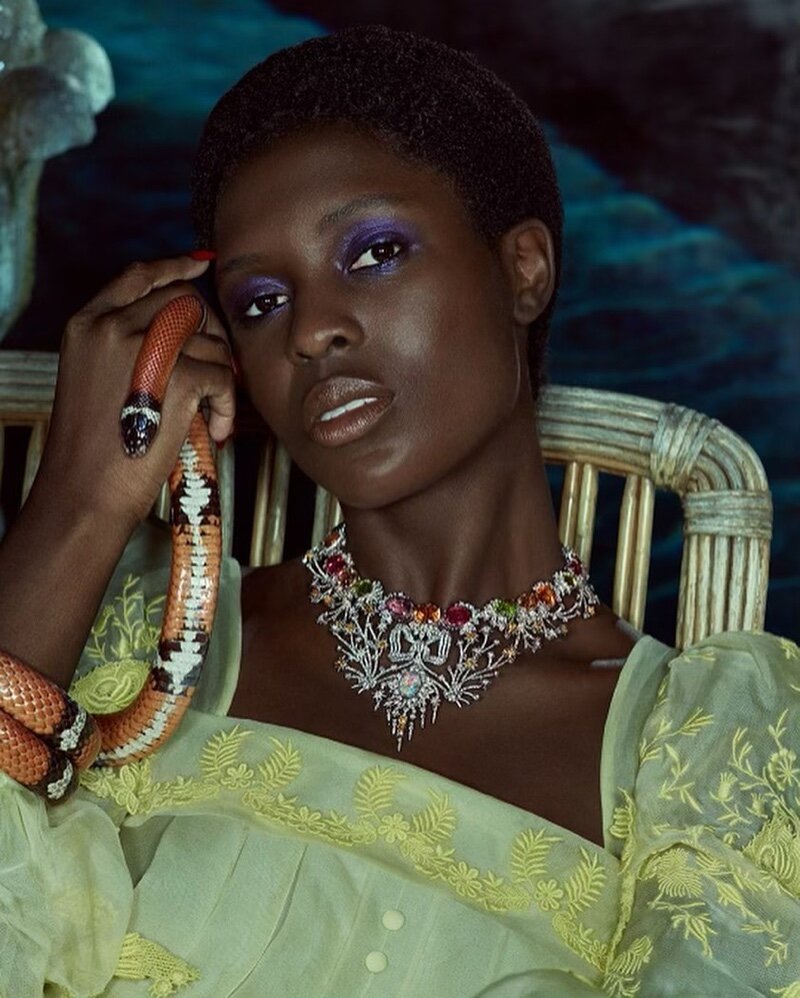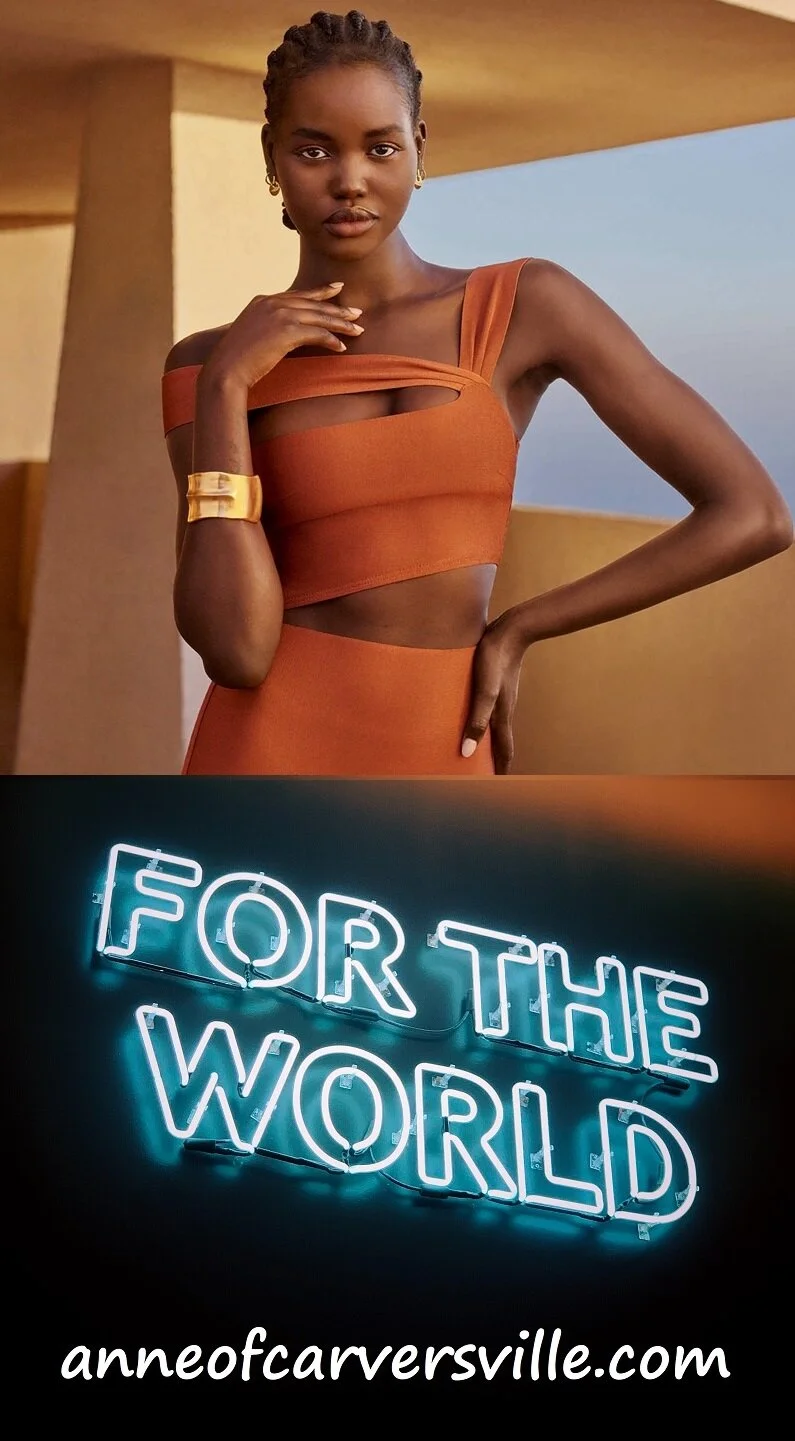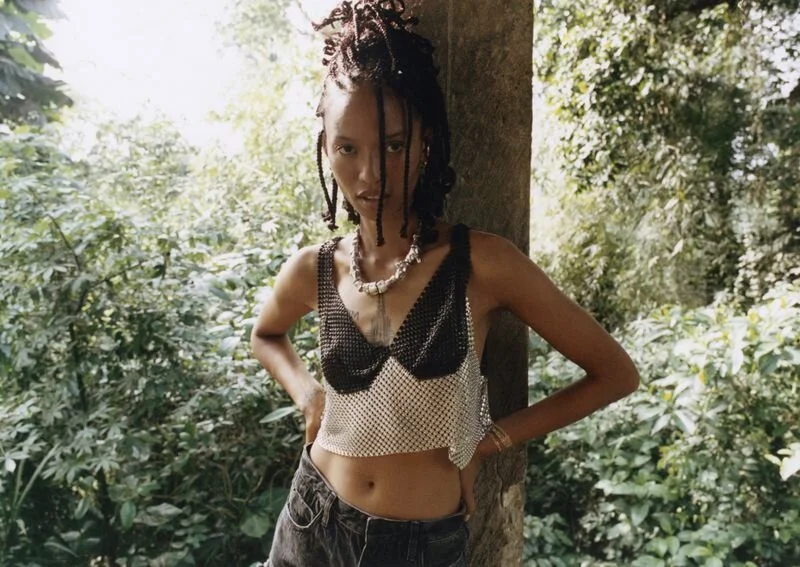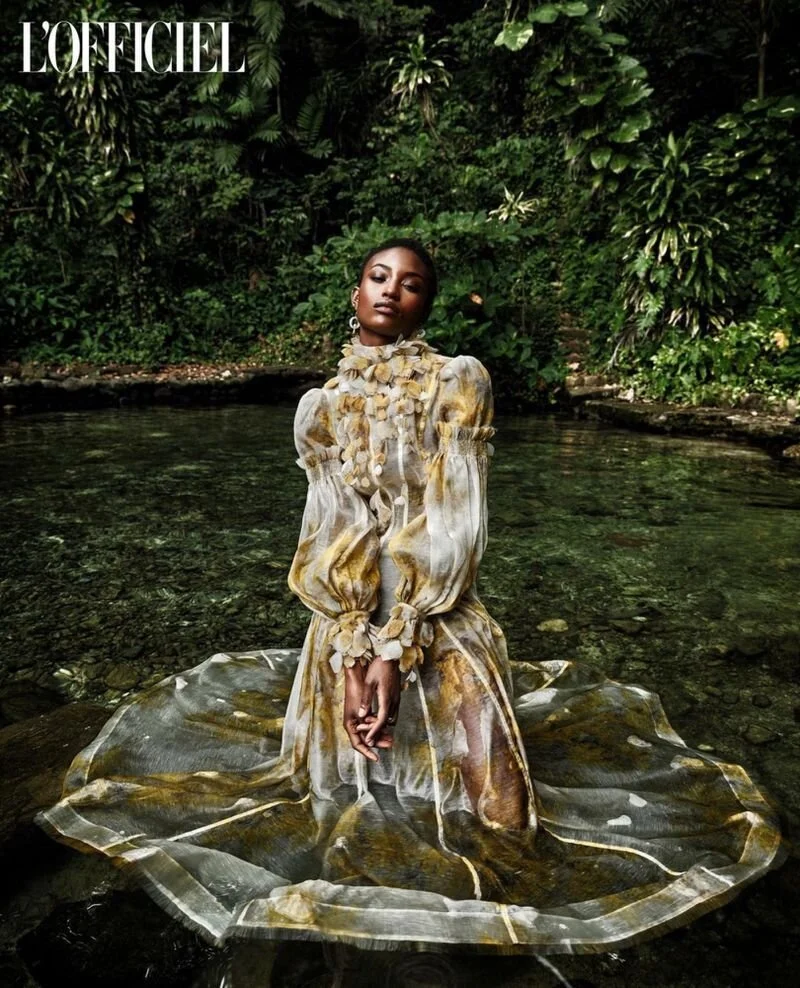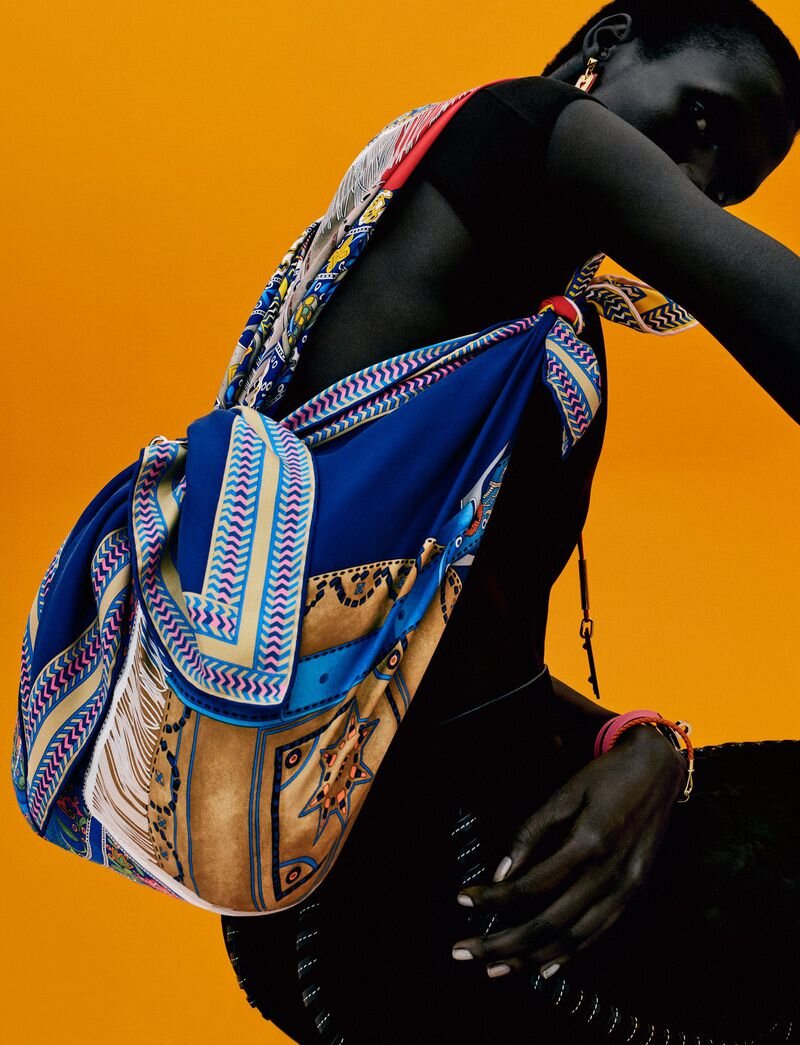Meet Vogue September 2020 Covers Artists Kerry James Marshall, Jordan Casteel
/Vogue US released two September 2020 covers with paintings by contemporary artists Kerry James Marshall and Jordan Casteel. Both artists were given complete freedom to chose whether their cover would be a real of imaginary person and the pose and visual presentation of that person. The only requirement was that they choose a dress by one of four Vogue-selected designers for their subject.
Kerry James Marshall
Kerry James Marshall created a fictional scene for his Vogue cover. His Black woman wears a white formal evening dress by Off-White.
“I’m trying to build into her expression that she’s not dependent on the gaze of the spectator,” Marshall told Vogue. “‘I’m here and you can see me, but I’m not here for you.’ That’s a critical element. The great word, ultimately, is going to be ‘self-possessed.’ That’s what I’m aiming for.”
Marshall, 64, created his mythical figure as a very dark-skin Black woman, mixing carbon black, mars black, and bone black with shades of cobalt blue, chrome green, carbazole dioxazine violet, yellow ochre, and raw sienna paints — speaking to the very complexity and variable composition of Black skin.
“If you’re going to be painting a face as Black as I’m painting them, they can’t just be a cipher, like a black hole. They have to be mysterious but available,” Marshall told Vogue. “If you say, ‘Black is beautiful,’ you have to show it. And what I’m doing is showing it at the extreme. Yes, it is black—very black—and it is very beautiful.”
Kerry James Marshall Artist
American artist Kerry James Marshall was born in Birmingham, Alabama and grew up in South Central Los Angeles. Marshall lives now in Chicago, Illinois where he taught previously at the School of Art and design at the University of Illinois at Chicago.
Marshall’s tendency to exaggerate the pigment of the people in his paintings, making them as black as the pigment permits succeeds in drawing more contrast and attention to the other colors and stylistic content of his paintings. It’s impossible not to consider the intention that Marshall is challenging the viewer to explore all the layers of social hierarchy attached to skin pigmentation by emphasizing the deepest, most complex shades of dark skin.
“You can’t be born in Birmingham, Alabama in 1955 and grow up in South Central near the Black Panthers headquarters, and not feel like you’ve got some kind of social responsibility,” the artist has said of his upbringing.
These two videos give us an introduction to the artist himself. The first an in-depth exploration of a single Kerry James Marshall painting acquired by the Smithsonian Museum — and the second a short but very articulate narrative by the artist on the topic of access to museums and establishing one’s identity and influence within the larger culture.
In 2016-17, New York City’s Metropolitan Museum of Art confirmed Marsha’’s status as one of the greatest living artists. The retrospective prompted the New York Times to declare that the artist is ‘Shifting the Color of Art History’. The first retrospective of Marshall’s work opened initially in Chicago at the Museum of Contemporary Art before opening at the Met Breuer , with a third stop at The Museum of Contemporary Art in Los Angeles.
Hyperallergic’s Mimi Sheller argued that the retrospective left “a vast silence around the black and African diasporic dimensions of his work. Ensconced within a project of demonstrating his relation to the Western canon (including comparisons to Dürer, Degas, Holbein, Chardin, Cézanne, Velasquez, Courbet, Eakins, Watteau, etc.), these institutions remain locked into a white historical narrative in which Marshall’s work inevitably appears as “belated.”
Sheller further charged curator Helen Molesworth of attempting to critique Marshall’s paintings almost exclusively through the lens of a white, male, Western canon of painting, while ignoring “the ways in which Marshall’s work fits into and extends black visual culture, black feminist art, and what he calls “black aesthetics.”’
Jordan Casteel
Jordan Casteel, 31, chose the designer and activist Aurora James for her Vogue cover. James perches on a stool on the rooftop of her Brooklyn apartment building. She wears a flowing blue silk gown from Pyer Moss. Casteel has painted James looking more directly at the viewer.
Clearly enthused by her Vogue experience, Casteel told the magazine, “What’s most exciting to me is being given artistic integrity and being able to choose the person to be my sitter—someone who reflects a portion of my own identity—and then to do that truly in the medium of my choice. This is the way that I speak to the world.”
Jordan Casteel Artist
‘Jordan Casteel: Within Reach ‘, the artist’s first solo exhibition in New York City remains on view at Manhattan’s New Museum through Jan. 3, 2021. The exhibition has been shuttered due to the COVID-19 lockdown. The museum is scheduled to reopen on September 15, with free admission through September 27.
Watch a virtual tour here.
Writing for the New York Times, Jillian Steinhauer compares Casteel’s oversized paintings to those of the photographer of the photographer Seydou Keïta, known for his portraits of people and families in Mali’s capital Bamako.
The murder of America’s black men and boys is an important genesis behind Casteel’s paintings. She began working at her M.F.A. at Yale from 2012-14, months after George Zimmermann killed Trayvon Martin over a bag of Skittles. The stereotypical portrayal of black boys and men in America prompted the artist to show their humanity in an art devoid of stereotypes.





